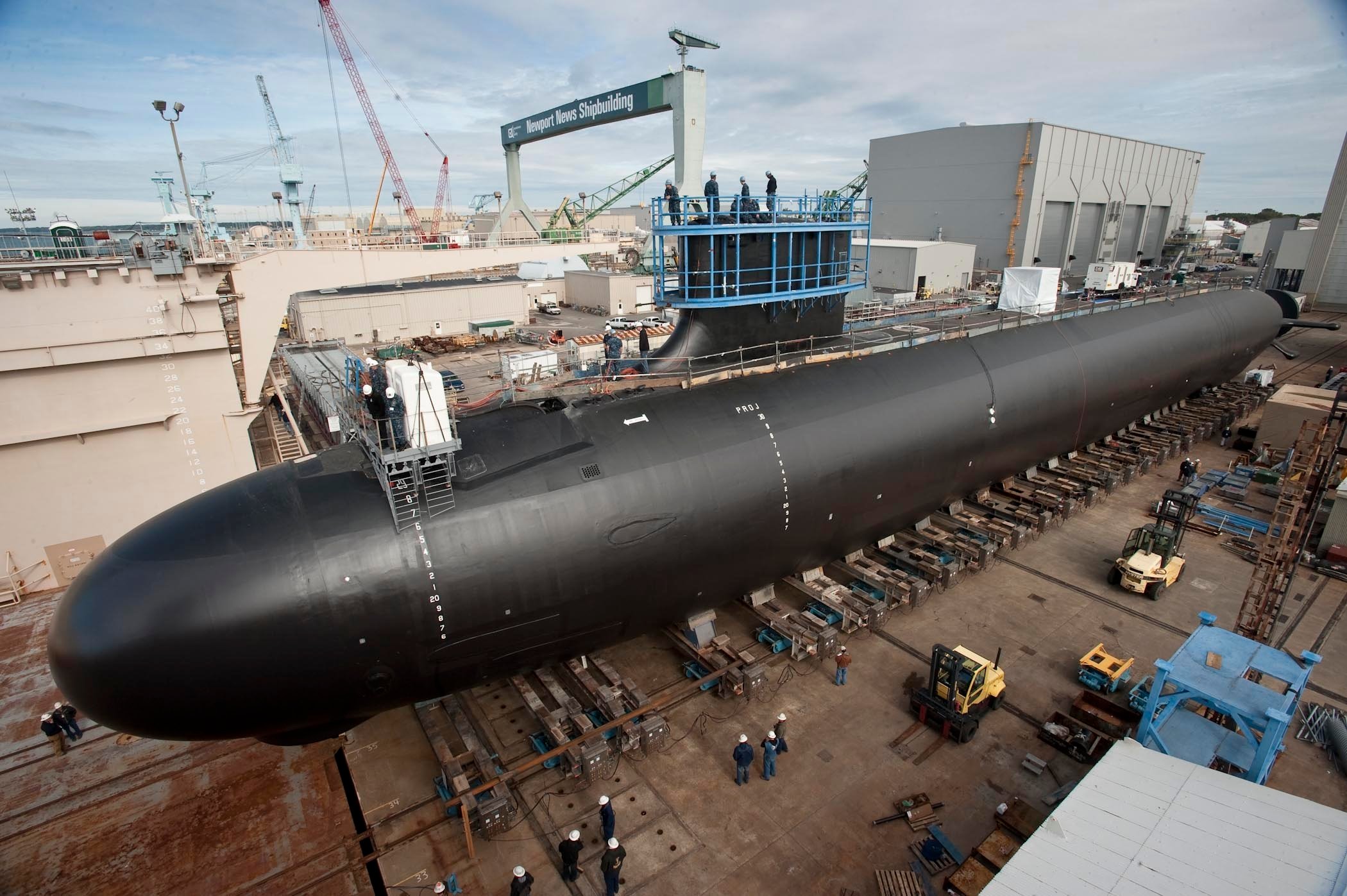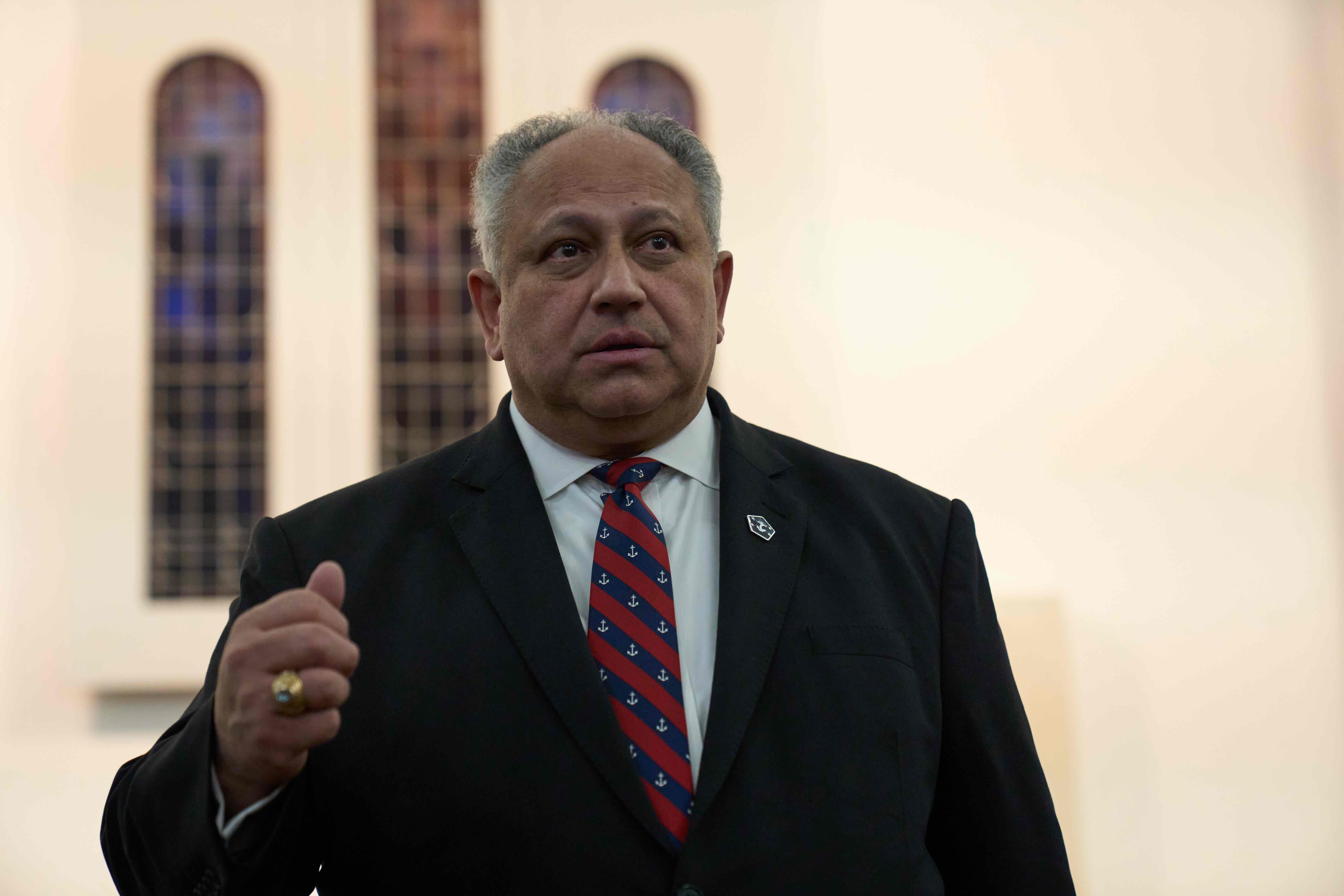
The Navy told Congress it would pursue a 10-ship multiyear procurement contract for its Flight III Arleigh Burke-class destroyers in Fiscal Year 2018 as part of its newest long-range shipbuilding plan, which also announced a nine-ship attack submarine block buy and delays in several auxiliary ship programs.
The plan, which the Navy admits represents a “best case scenario” – one in which Congress pays for the Ohio replacement ballistic missile submarine program outside the shipbuilding account and in which the Navy is not held to Budget Control Act-level funding – notes a 308-ship requirement and shows how the Navy plans to meet that requirement from 2022 to 2031
The destroyer contract is one piece of reaching the goal, as the Navy plans to keep the production line open through FY 2029.
In 2013, NAVSEA made a similar $6.1 billion multiyear deal with Huntington Ingalls Industries and General Dynamics Bath Iron Works for nine – which grew to 10 – Arleigh Burke DDGs. The price-per-hull came to $660 for HII and $700 for BIW, not including government-furnished equipment like radars and vertical launch systems (VLS).
In late March, both yards received contract modifications as part of the deal. HII was awarded $604.3 million for DDG-121 while BIW won $610.4 million for DDG-122.
The first Flight III DDGs will be part of the FY 2016 ships. Its unclear which yard will be the first to build the modified destroyer with the upgraded Raytheon Air and Missile Defense Radar (AMDR), Naval Sea Systems Command told USNI News last week.
The shipbuilding plan indicated the Navy will pursue a nine-ship multiyear procurement contract for the Block V Virginia-class SSNs bought between FY 2019 and 2023. That contract supports continuing two-a-year SSN procurement except during years when an Ohio replacement SSBN is built, when only one SSN will be built. Officials have said that, in terms of shipyard workload, one SSBN is about equal to two SSNs.
To go along with the SSN block buy, the Navy notes in the plan that the Virginia Payload Module (VPM) would be built into at least one submarine per year beginning in the FY 2019 block buy, though Navy acquisition chief Sean Stackley told the House Armed Services Committee in February that he was looking into whether that timeline could be moved up a year. The VPM is a mid-body section that would be added to the submarine and include four additional launch tubes, or 28 additional Tomahawk missiles or other payloads, to help compensate for the loss of the SSGN guided missile submarines, which will have all retired by 2028.
The Navy has updated its LX(R) amphibious dock landing ship replacement program to “a more efficient procurement profile,” which procures the lead ship in FY 2020 and begins serial production in 2022, according to the document. Previously, the Navy planned to buy the ships every other year and not enter serial production of amphibious ships until 2028. The Navy chose a modified San Antonio-class amphibious transport dock to serve as the LX(R), and the new profile would allow a smoother transition from the LPDs to the LX(R)s.
The document states that, as a result of budget constraints, one of the two T-ATS auxiliary tugs, which will replace the T-ATFs and T-ARSs, will be delayed from FY 2017 to 2019. The lead T-AGOS surveillance ship replacement will be delayed from FY 2020 to 2021, and it the Navy is in the midst of an engineering review to determine if the current T-AGOS ships’ lives could be extended further beyond the planned 30 years.
The plan announced a cancelation of the LCC amphibious command ships in FY 2032 and 2034, and instead the Navy “will look at alternative means to meet the requirements fulfilled by these ships, such as modular systems that can be temporarily installed on an existing ship.”
Of course, the Navy notes, all these plans are subject to adequate funding. The document states that the Ohio Replacement Program (ORP) will move ahead as scheduled regardless of the fiscal situation, and the Ford-class aircraft carrier program will have to continue to maintain a legally mandated 11-carrier fleet. That said, the document notes that the ORP will “consume about half of the shipbuilding funding available in a given year – and would do so for a period of over a decade. “
Without additional funding for shipbuilding, or paying for the ORP with non-shipbuilding money, “Navy would be limited to, on average, as few as two other capital ships (SSN, DDG, CG, LPD, LHA, etc.) per year throughout this decade,” the document states.
“Such low shipbuilding rates for an extended period of time would result in a battle force inadequately sized to meet our naval requirements in support of the DSG. Further, there is significant risk to the industrial base in this case since low production rates outside of the SSBN and CVN production lines may not provide adequate work to keep shipyards operating at minimum sustaining levels and could result in shipyard closures.”





